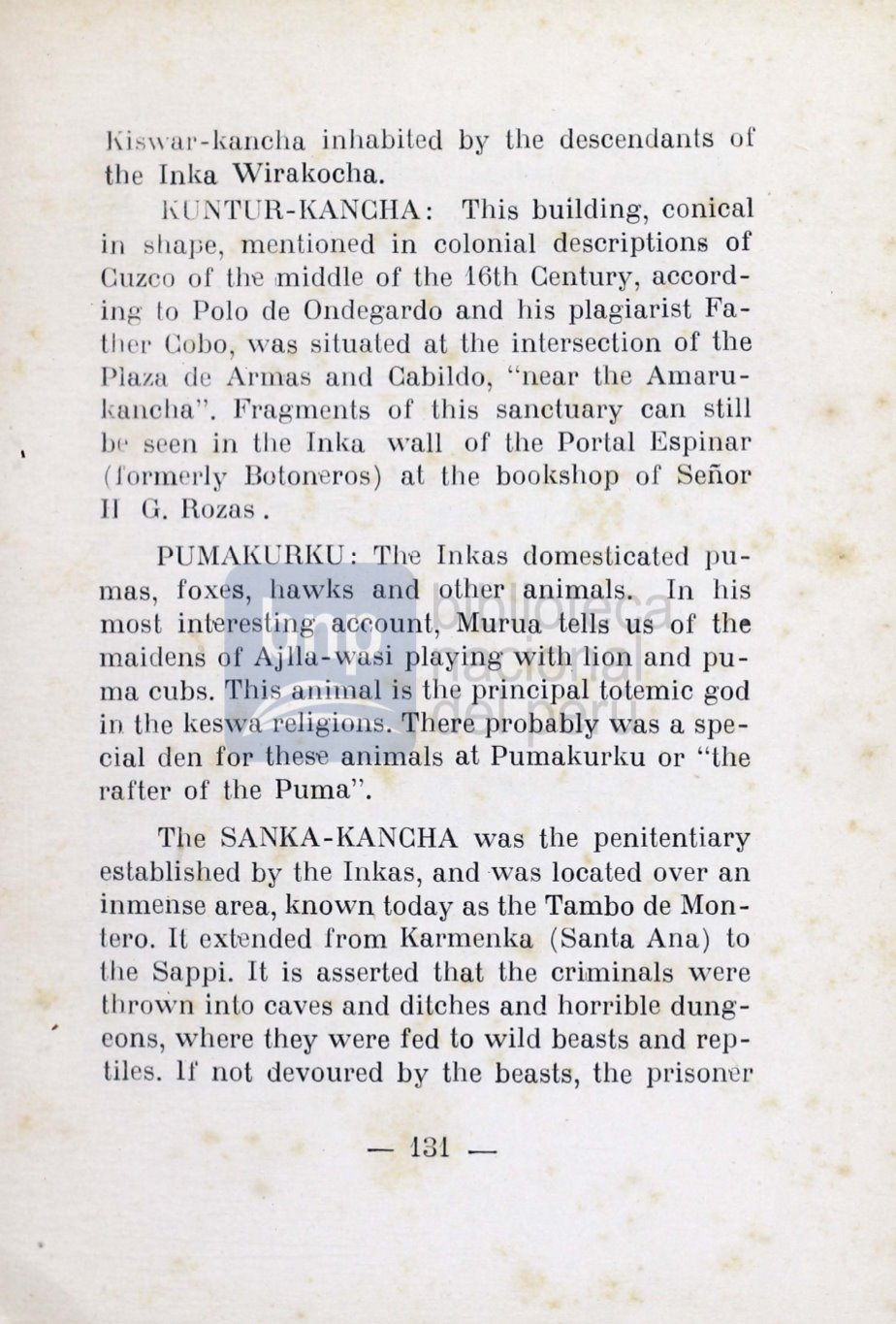

;
1\i .' \\ ·ar-kancha inhabited by the descendants of
the Inka Wirakocha.
K TUR-KANCHA: This building, conical
in shape, mentioned in colonial descriptions of
Cuzco of th rmiddle of the 16th Century, accord-
. ino· to Polo de Ondegardo and his plagiarist Fa–
ti
1
t'
Cobo,
~r as
situated at the intersection of the
Plaz de A·rn1:as and Cabildo, "near the Amaru–
kancha . Fragments of this sanctuary can still
L1·
ti
en in tl1e Inka
~.
7
all
of the Portal Espinar
( 1'
rmerly Botoneros) at the bookshop of Señor
Il G. Rozas.
PUMAKU KU: Tl1e Inkas domesticated pu–
mas, fox s, 1awks and othrer animals.
ln
his
most intieresti g oc0unt, Murua tells us of the
maidens of A>jlla-wa i playin
ith. lion and pu–
ma cubs. This anunal is the principal totemic god
in the kes,;v
eligions. There prohably was a spe–
cial den for thes animals at Pumakurku or "the
rafter of the Puma".
The SANKA-KANCHA was the penitentiary
established by the Inkas, and ·was located over an
inmei1se area, known today as the Tambo de Mon–
tero. It extended from Karmenka (Santa Ana) to
the Sappi. It is ass(jrted that the crirminals were
thrown into caves and ditches and horrible dung–
eons, where they were fed to wild beasts and rep–
til s. lf not devoured by the beasts, the prisoner
- 131 -
















